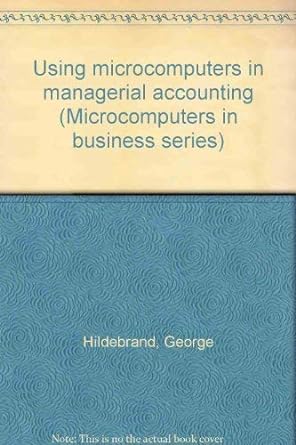Question
#Question You are required to write a Business Plan Report and you are advised to follow the below given outline. Part I- Product/service idea Business
#Question You are required to write a Business Plan Report and you are advised to follow the below given outline. Part I- Product/service idea Business Plan Report (40%) To make the best impression, a business plan should follow a convention structure, such as the outline shown below. Cover page Table of contents 1. Executive Summary (10 marks) A succinct highlight of the overall plan- include ownership structure, business address, product/service, the management team and strategy and strengths. 2. Industry Analysis (10 marks) An overview of the industry, including consideration of the competition, industry trends, and regulatory bodies. 3. Definition of the Business (5 marks) Explanation of the business concept, the current offering and the projected growth. 4. Purpose of the Business Plan (5 marks) Dominant reason for the preparation of the business plan. 5. Business Feasibility (5 marks) Analysis of the demand (include highlights of the findings of the market feasibility study), risk (include business and market risks), environmental impact. 6. Justification of the Business (5 marks) Economic, social and personal benefits. 7. Organisation and Management (10 marks) Vision and mission statement, corporate goals, managerial competence, organisation structure and organisation chart. 8. Operational Considerations (15 marks) Location, technical requirements (explain key business processes), equipment required (state whether it is a manufacturing or retail business), suppliers of raw materials, utilities, opening hours etc. 9. Marketing Arrangements (10 marks) Target market, definition of the product or service, pricing, distribution and promotion. 10. Financial Consideration (15 marks) Source of financing, capital cost, pre-operating expenses, working capital requirements, cash budget over three years (estimation of the cash inflows and outflows). 11. Appendices (5 marks) Tools used in feasibility study, profile of management team, prospective suppliers and clients, samples of product design, labels, promotional campaigns, floor plan and legal documents (where possible) 12. References (5 marks) Bibliography, credits, acknowledgements. Guidelines writing business plan 1. All work must be submitted in English. 2. Please use the same format for completing the final project report: a. Use A4 size paper and leave at least 40 mm for the left-hand margin and about 25 mm for the right-hand margin. Also leave about 40 mm at the top and 25 mm at the bottom of each sheet. b. Font is Arial and font size 12. c. Paragraph spacing 1.5. d. Number each sheet at the bottom. As you write, make cross-references by section rather than by pages. Page numbers may change later. If you wish to refer to the page numbers in the text, do so only after you have the final version of the report. e. Sections and subsections should be numbered for reference, but avoid cumbersome sub-sub-section numbering such as 4.2.3.6. To keep the contents, list short, include only numbered headings. There is probably no need to exceed two digit numbers, such as 4.2 or 3.4. f. Headings should be used at the beginning of sections and anywhere else necessary. Carefully selected headings make the report clearer and will avoid confusing the reader. They should be distinguished by a change of font or size, or may be underlined in the report. g. Tables should be used to present information concisely where graphs or histograms are not appropriate. In setting out tables, arrange the data so that there are more rows than columns and use a minimum of horizontal lines. Table headings should follow the section number (e.g., in Section 1, Table 1.1, 1.2, 1.3 ...) in the order in which they are mentioned. They can then be referred to in the text by number only (e.g., Table 1.1). Place the tables in the text near to where they are first referred to. If you use a very large number of tables, they may be more conveniently placed at the end of the report or you may want to put them in the appendix. h. Equations should be numbered by section (e.g., in Section 2, Equation 2.3, 2.7 ...). You may need to show an equation in the financial projection section. This ensures that if one is deleted or if you need to refer to an equation that you have not previously numbered, only those in that particular section need to be re-numbered. Keep the number to the right margin of the page. Check all references to equations in the text when editing your final draft. i. Graphs, histograms, drawings, diagrams and photographs should all be referred to as figures: Figure 1.1, Figure 1.2, and so on. If the size of the figures is small, you may put two on one page. Insert a caption for each figure. Place the figures in the text next to where they are first mentioned. Keep the labelling inside the figures to a minimum using letters, abbreviations and symbols; avoid phrases. Use the figure caption to explain the details. For example, different curves on a graph may be labelled A, B, C and so on and each can then be identified in the caption. Check all references to figures in the text and any information you quote from within the details of the figure. j. You may use different colours between curves or parts of a diagram.
Step by Step Solution
There are 3 Steps involved in it
Step: 1

Get Instant Access to Expert-Tailored Solutions
See step-by-step solutions with expert insights and AI powered tools for academic success
Step: 2

Step: 3

Ace Your Homework with AI
Get the answers you need in no time with our AI-driven, step-by-step assistance
Get Started


